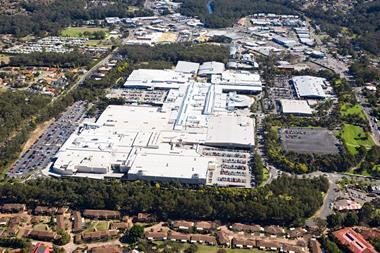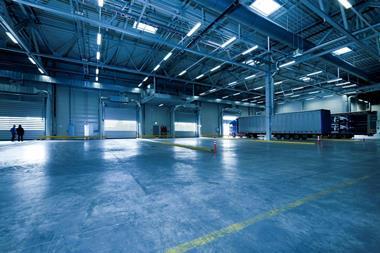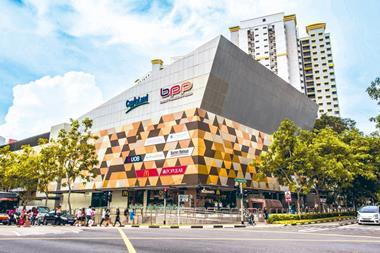Despite being one of the most opaque real estate markets, Vietnam has a fast changing retail scene that offers exciting prospects, says Rik Mekkelholt
Vietnam's rapid economic development, strong demographics and recent World Trade Organisation accession are attracting growing numbers of international retailers. Despite developing legal and administrative systems and less than full transparency, investors are being drawn to Vietnam as economic growth fuels demand for consumer goods and modern retail formats.
A key factor underpinning retailer optimism is demographics - an estimated 70% of Vietnam's population is under 35, and the country has an abundance of young, urban residents with steadily rising incomes.
Vietnam is now the second fastest growing economy in Asia, after China: the economy grew 8.2% in 2006, the forecast for 2007 is 8.4% and the government recently announced a 2008 target of 8.7%.
Retailer interest intensified when Vietnam entered the WTO in 2006, committing to opening its retail markets to direct foreign participation. From January 2007, foreign investors were permitted to establish distribution joint ventures in which they hold up to 49% of capital, and in 2009 Vietnam will open its market to 100% foreign-owned retailers. International retailers gearing up to enter the market include Tesco, Wal-Mart and Carrefour.
These commitments are driving intense activity by Vietnamese retailers such as the Hanoi Trade Corporation (HAPRO), which is determined to contest their home market. HAPRO opened its first stores in Hanoi in November 2006 and by June 2007 had opened seven supermarkets and 15 convenience stores in the city.
However, both local and overseas retailers face limitations as the modern retail market is still largely confined to urban areas. Modern retailing is not likely to be available to most Vietnamese for some time.
Vietnam is quickly moving from a culture of self-denial to one of self-indulgence, with wet markets giving way to shopping centres, bicycles to Italian scooters and casual clothing to branded fashion.
In urban areas, the number of households earning US$600-1,000 (€420-700) per month is the fastest increasing segment of the population, followed by households earning more than US$1,000 per month.
Rising incomes and the emerging consumer culture are driving increased consumption, and spending on fast moving consumer goods is growing by 20% year-on-year - in 2000 retail spending in Vietnam was just $15bn, in 2006 it reached $36bn, and by 2010 it is expected to exceed $50bn.
There is an acute shortage of purpose-built retail space, and demand is significantly outpacing supply. Most existing space also fails to meet international standards, and in order to secure a foothold many international retailers have chosen to refurbish shophouses as they await better-quality space.
Traditional shopping is still the foundation of the retail market, with 90% of goods circulated through traditional markets and shophouses. This is changing however: in 1995 the country had just 10 supermarkets and two shopping centres - in 2007 there are at least 140 super/hypermarkets, 20 shopping centres and nearly a million square metres of retail space under development.
In Ho Chi Minh City (HCMC), 13 shopping centres offer 140,000m2 of retail space, with
the largest measuring 33,000m2. Occupancy in these facilities is at 99%. Hanoi has approximately 100,000m2 of retail space spread over six shopping centres, with occupancy also at 99%.
Approximately 350,000m2 of retail space is expected to come on line before the end of 2011 in HCMC, with 380,000m2 under development in Hanoi.
While the average shopping centre is still quite small, projects on the scale seen elsewhere in Asia are under way. The 130,000m2 Ciputra Mall in Hanoi is scheduled for completion in 2010. Many of these new facilities will be located outside city centres, in districts where new upscale residential communities are appearing and it is easier to acquire the right land.
International visitors are a major contributor to retail sales across Asia, with cities vying to attract shoppers through annual events such as the ‘Hong Kong Shopping Festival' and ‘Great Singapore Sale'.
Though tourist numbers travelling to Vietnam continue to grow, average visitor spending is still far lower than that in established shopping destinations such as Bangkok and Singapore. According to a 2005 survey by the ministry of culture, sports and tourism, independent visitors to Vietnam spend an average of $76 a day; those on package tours spend $37 per day, while visitors to Thailand and Singapore spend between $1,200-2,000 per day. So there is significant potential for a growth in visitor spending as retail options increase.
Vietnam attracted nearly 3.6m international visitors in 2006, and expects to receive 6m by 2010 as the tourist profile expands to include greater numbers of well-heeled travellers. The ministry expects revenue from tourism to reach $4.6bn by 2010.
Given the supply-demand imbalance, rents are expected to continue to rise. While the wave of projects under development will provide some relief for pent-up demand, the run-up to the 2009 opening of retail markets is expected to see sustained demand for large retail units from both Vietnamese retailers and foreign retailers jockeying for quality space.
Increasing rapidly since 2002, average rents in HCMC and Hanoi ended the third quarter of 2007 at $40/m2 per month, with rents for prime, CBD and ground floor space reaching up to $200/m2 per month. Unprecedented for Vietnam, these rents are still in the mid-range of regional retail rents. As more supply becomes available, growth should slow, but the end of rental appreciation is not yet in sight.
Approximately 10 franchising systems are in operation. Several of the largest, including noodle chain Pho 24, are local franchises. Pho 24's rapid expansion - founded in 2003 it now has over 50 branches nationwide - demonstrates the potential for international or local franchises that catch the popular imagination, and are well managed. In another indication that Vietnamese retailers may prove extremely competitive, Highlands Coffee, Vietnam's answer to Starbucks, now has 52 coffee shops and expects to have more than 70 by the end of this year.
Many famous fast-food names have yet to test the waters but some, including KFC, Lotteria and Jollibee, have begun to change eating habits. The most recent additions are Gloria Jean's Coffees and Pizza Hut.
KFC entered Vietnam in 1997 and now has 38 outlets, 32 of them in HCMC; it expects to have 100 within three years. Pizza Hut recently opened two stores in HCMC and plans to have about 20 outlets by 2010. Korea's Lotteria is expanding fast in HCMC, with 35 branches, all company-owned.
There is growing interest among local and international franchisers, and the government is reviewing the franchising regulations. However, challenges remain as familiarity with franchising remains low, potential managers are in short supply and start-up costs and master-franchise contracts are too high for the local market. The combination of restrictive barriers to entry, lack of franchise experience, and lack of space in prime locations is likely to limit growth in international franchising over the next few years, though local franchises will continue their aggressive expansion.
Vietnam is one of the world's most promising retail markets due to its size, recent WTO accession, sustained economic growth, expanding leisure class and rising levels of disposable income. These trends are likely to continue for some time as FDI increases, urbanisation continues and the government increasingly implements policies designed to facilitate foreign investment.
It is the size and extent of the population in their prime spending years that distinguishes Vietnam from Asia's other retail markets: by 2011 nearly three-quarters of the population (69%) will be aged between 15 and 64, and Vietnam's retail environment is expected to mature along with the generation of young consumers.
Rik Mekkelholt, is manager, retail services, CB Richard Ellis (Vietnam)












